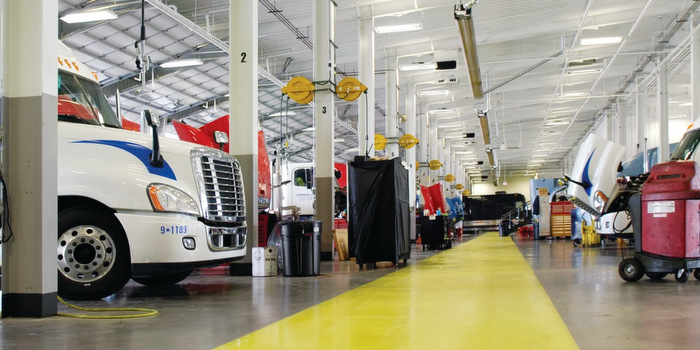I always get asked, “How many vehicles per technician?” As a seasoned “iron doctor,” I should know. However, when I fire back more questions to help me determine the answer, those who ask me the question don’t understand why I don’t have a set response.
The technician to vehicle question is asked many times and there is always someone who will say it should be “X vehicles per tech.” But there is no real industry formula because there are too many variables, such as: Number of locations; use of outside vendors; PM intervals; detailed PM requirements; miles between PMs; domiciled or non-domiciled vehicles; age of the equipment; warranty work internal or external; tech experience and quality; and size of the shop. Then there are the questions involving required operational shop hours, accidents, damages, internal damages and, to some degree, the specifications of the vehicles, the number of DVIRS, type of electronic equipment. The list goes on to include:
• Tires: Who does tires, internal, external? What is the tread depth, are there recaps, what is the damage?
• Days off: Vacation? PTO days? Sick days?
• Fueling: who fuels the trucks, and who puts DEF in the trucks?
At the end of the day, the ideal is the fewest techs, a simplified program with no complicated procedures—and no delays related to “busy work.” In addition, equipment should not be “over-maintained,” such technicians being taken off maintenance to do: Yard checks; snow plowing; cutting the grass; polishing “my boat;” washing someone’s car; or other non-essential tasks that take away from the maintenance jobs at hand. In addition, techs may be asked to deliver loads during peak periods or driver shortage times. Sometimes the tech has to drive two hours to swap drivers because he has run out of hours.
The reason the question is asked often comes from management’s assumption that the shop has too many people—because the costs are running high. If someone determines that the body count is too high, you may be asked to defend your staff. The higher costs are probably less related to the number of technicians and more related to new emissions and warranty engagements, or that the labor rate is higher than it use to be. It is true that costs are going through the roof, and that there are dealership backlogs. What we used to accept as reasonable ratios no longer applies.
In defense of those who are asking the question, the justification of their job may come from getting maintenance managers to look closer—do a “deep dive”—and figure out what is going on. This is usually a question that comes from a finance person talking to another finance person or a guaranteed maintenance provider quoting seeding answers in a way to obtain a new client, or a leasing company trying to take over the shops, or determining a lease for new equipment. When leasing companies quote numbers, which are normally are very attractive, it does not include all the little extras technicians may be asked to do. Leasing companies or maintenance providers only do the basic maintenance, basing their numbers on the formula of maintenance and not the hours such as those your own shop may schedule, although they will, when asked.
To answer the question of vehicles to technicians ratios, I suggest that you look at previous averages, set a goal so at the end of the day you can perform like a leasing company, which is lean, not so mean, and efficient. Do not over-maintain and have all the costs related to the hours your techs spend on changing light bulbs in the office at your finger tips. Or, if you have a simple standardize fleet, say all day cabs, and an established trade cycle, a ratio can be determined. One of the best way to do it is to project the costs, divide the total dollars by two, (labor and parts average 50% each) then divide the 50% labor dollars by a fully burdened labor rate average, the calculation determines the hours—then back into the hours of operational required
For more information, visit www.darrystuart.com or email comments or questions requests to Darry at: [email protected].













